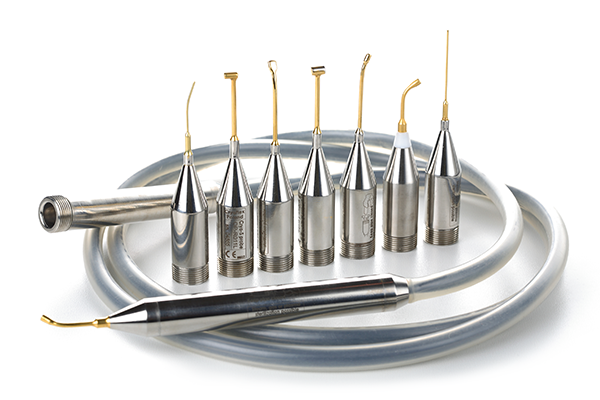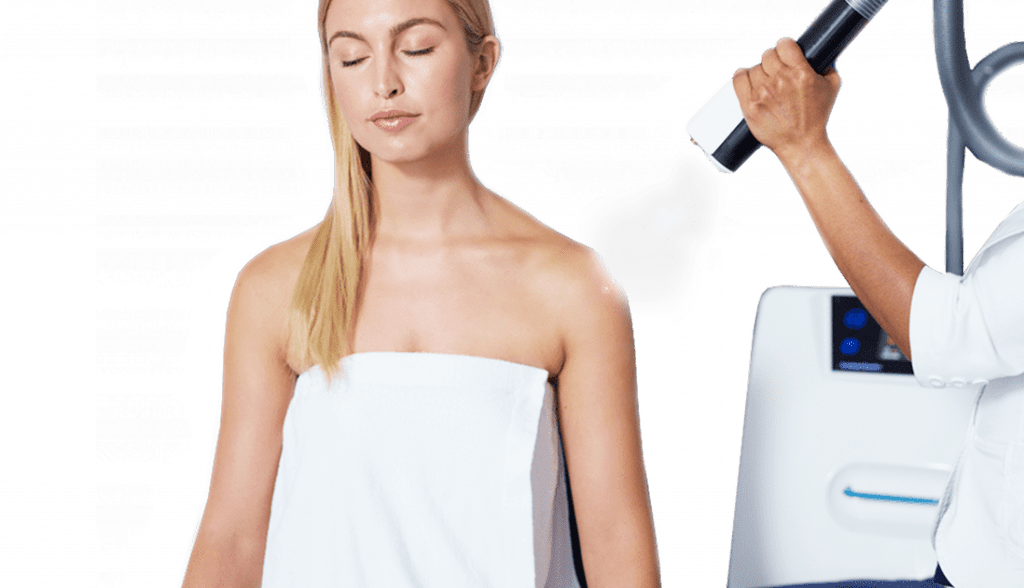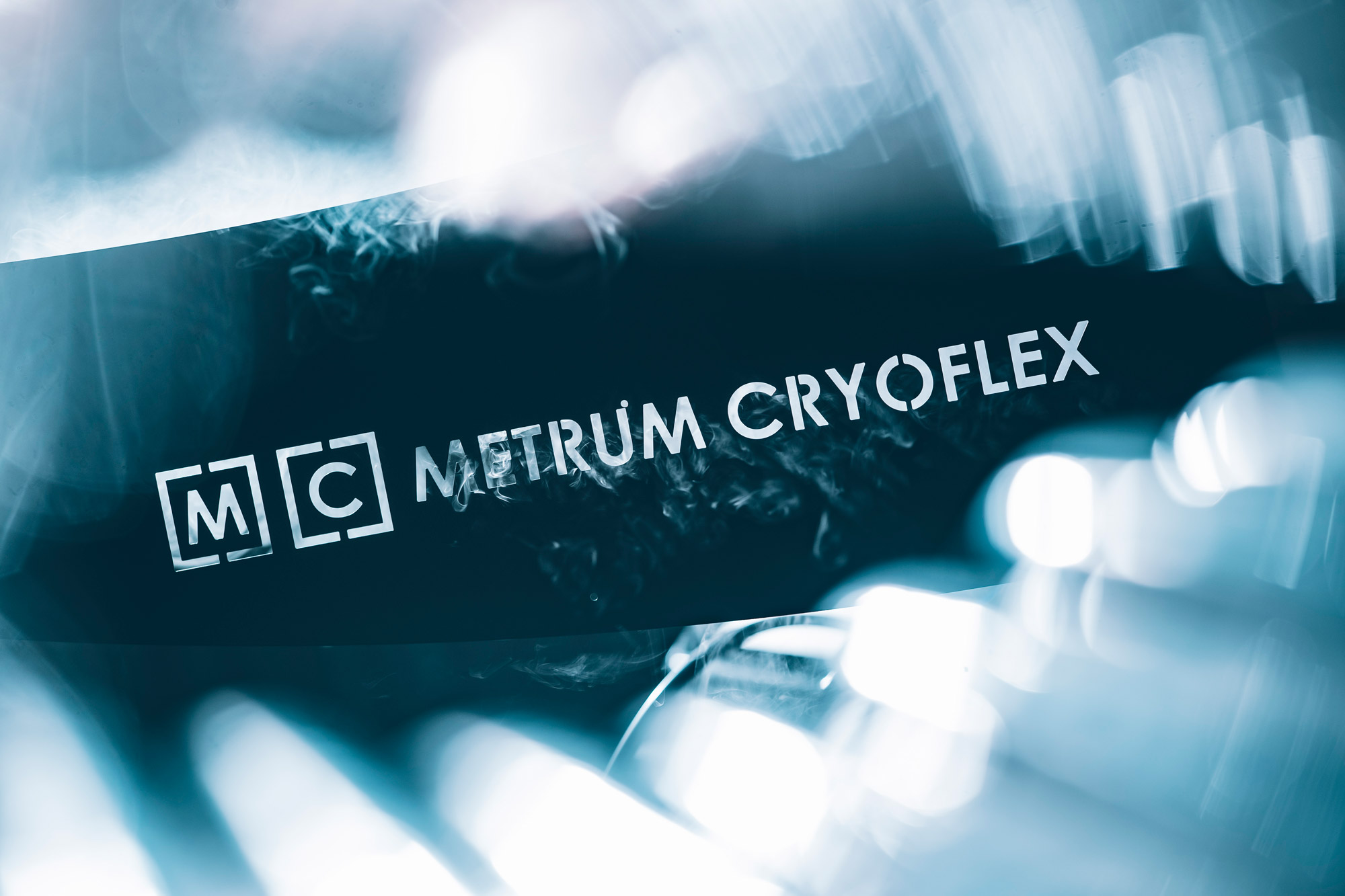Cryotherapy – what needs to be explained?
Although cryotherapy is an increasingly popular method of treatment, there is still a lack of publications explaining the inconsistencies in nomenclature, giving uniform definitions of stimulation and non-stimulation methods. There is also a lack of explanation regarding the refrigerants and treatment techniques used to achieve the intended cryotherapeutic effects. The following article is an attempt to systematize these inconsistencies so that communication between doctors and patients, and often even doctors themselves, is clear and not misleading.
The term Cryotherapy is overused and too general to describe the proper application.
In order to standardize and clarify certain concepts, I propose to follow diagram 1.
The concept of Cryotherapy included in the diagram has a very broad meaning and includes all methods of treatment using cold. Due to its great generalization, this word is very often misused by both doctors and therapists.
When asking about a cryotherapy device or describing the actions performed on tissue, each of them has something completely different in mind. A gynecologist or dermatologist thinks about destroying tissue by freezing it, while a physiotherapist means a stimulating or cooling action that does not damage tissue. They use the correct word, but it is not very precise for their purposes.
The division I have proposed, which is partly signaled in some works, into cryosurgery, cryopeeling, cryostimulation and cooling should clarify the matter not only in terms of nomenclature, but also in terms of methods of applying low temperatures, as each of these four concepts requires different application techniques. This particularly applies to the distinction between cryostimulation and cooling, as I have not found a clear and specific explanation in any work.

Diagram 1
The problem of definitions in scientific publications
Let's look at several definitions of cryostimulation, although the authors use the word cryotherapy interchangeably:
- "Cryotherapy is the use of a physical stimulus that lowers the temperature of tissues for therapeutic purposes" – Prof. K. Spodaryk
- "Cryotherapy is a non-invasive application of extremely low temperatures of cooled air vapors of liquefied gases, locally or systemically cooling the body integuments by radiation for a period not exceeding 3 minutes of exposure" – Prof. Z. Zagrobelny
- "This term should be understood as the stimulating application of cryogenic surface temperatures - below -100ºC, acting very briefly (2-3 minutes), in order to induce and use physiological, systemic reactions to cold, support basic treatment and facilitate movement treatment" - Dr. H. Gregorowicz
- "Cryotherapy is the application of a temperature below -100ºC to the outer surface of the body for 2-3 minutes in order to induce and use a physiological reaction to cold" – Dr. K. Księżopolska-Pietrzak
- "Thus, the idea of cryostimulation is to cool tissues as quickly and in the shortest time as possible in order to induce a reflex hyperemic reaction." – Dr. W. Gawroński
Although the second definition from the point of view of physics contains mistakes, which will be explained later, probably all authors agree that cryostimulation is about "rapid cooling, almost sucking relatively small amounts of heat out of tissues" – Prof. Z Zagrobelna. The etymology of the word cryotherapy is described in detail in the work of Dr. W. Gawroński {Rehabilitation 2003, 7, No. 2}. In the emerging works, most authors associate cryostimulation closely with the so-called extreme temperatures, below -80ºC or more often -100ºC, knowing that the process must take place quickly, but temperature is an important, but not the only parameter and the use of a cold source with a temperature of -100ºC does not guarantee the right effect. Cold dose is a more objective concept, but it also does not reflect the complexity of the cryotherapy procedure.
Types of cryotherapy treatments with different indications and courses.
Cryosurgery:
The fastest way to remove heat is to touch the tissue with a cold metal cryoapplicator or directly spray liquid cryogen onto it. It is a method used in cryosurgery to destroy tissues. It is not used in cryostimulation, because applying a probe or spraying cryogenic liquid for more than a few seconds would cause damage to the skin, and would not cause the intended stimulating effect. It seems obvious, but even here it is possible, by using appropriate techniques, to obtain intermediate effects between cryosurgery and cryostimulation, e.g. if we freeze the cryoprobe in the air so that it is covered with ice (insulator), and then we massage the skin with it, without causing it to whiten for a long time, we will cause a strong superficial stimulation: we use less to treat alopecia areata or steroid-induced acne, more for cryopeeling.

Cryostimulation with ice water:
The fastest, non-destructive way of cooling the tissue is ice water. In an ice bath, heat exchange is several dozen times greater than in a cryogenic chamber, where the air is about -120ºC. The same applies to local cryostimulation.
So the question arises, why don't we use ice baths instead of cryochambers? An ice-cold bath is so unpleasant and shocking that it could only be used in a few cases. Heat reception in the chamber takes place more slowly and mainly through radiation in a dry air atmosphere with a temperature of about -120ºC, where the cold is perceived as "friendly".
I would like to introduce here the concept of wet cold (water with ice), humid cold (air at a temperature of -15ºC ̧ -35ºC) and dry cold (cryogenic gases below -60 C) – diagram 2.
Each of the above-mentioned factors can cause a cryostimulation effect. The fastest way is to use ice water, but this method is too radical in the case of systemic cryostimulation, and too troublesome when applied locally. The patient's reaction to the type of refrigerant is also different.
Dry cold is the least noticeable by the patient as unpleasant. Virtually everyone can notice this phenomenon when staying outside in winter in various weather conditions.
Moisture in the gas at a temperature below -60ºC is practically imperceptible and such cold is the most comfortable for the patient.

Diagram 2
Cryostimulation with liquid nitrogen and carbon dioxide
Local cooling with vapors of liquefied gases, i.e. liquid nitrogen, air (-195ºC) or carbon dioxide (-75ºC). It is a fast, very convenient and patient-friendly way to cool any part of the body. In local cryostimulation, heat radiation plays a much smaller role than in the cryochamber. It should be added here that the use of CO2 intensifies the radiative heat exchange between the gas and the skin, because this gas absorbs infrared radiation, unlike nitrogen or dry air, which do not interact with thermal radiation (infrared). The cooling rate can be adjusted by the amount (velocity) of the gas stream, when using cold air or CO2, or by the distance of the nozzle from the tissue, when using LN2. In this way, it is possible to ensure that as much heat as possible is extracted, while not damaging the skin (cryodestruction).
From the above considerations, it is clear that the rapid removal of the heat dose does not have to be associated with the so-called extreme temperatures, and in the case of local cryotherapy, radiation exchange cannot be said to be the main method of heat transfer. The claim that the cryostimulation effect can only be induced by using cold below -100ºC is an abuse that has no justification from the point of view of heat transfer. In addition, in physics, the term temperature extremes refer to temperatures close to absolute zero, i.e. approx. -273ºC (0ºK.)

Cooling
Another ambiguity concerns the cooling effect, i.e. taking away heat in such a way as not to cause a stimulating effect. In diagram 3, it can be seen that cooling and cryostimulation are completely different methods of action in terms of the choice of cooling agent, application and use.
In the case of cooling, we use ice bags, gels, etc., i.e. agents considered by some authors as traditional or old-fashioned. From the point of view of effects, these are cheap and the most appropriate methods of slow, long-term maintenance of tissues at reduced temperatures to prevent their further traumatization after fresh injuries. The use of rapid cooling agents, such as ice water, liquid nitrogen vapor or CO2, is inappropriate in this case and may cause increased extravasation, edema and further tissue damage. In the case of fresh injuries, the most appropriate procedure is probably recommended in K. Knight's book, i.e. the PRICE procedure (Procetion, Rest, Ice, Compression, Elevation).
Please note that ice bags absorb heat many times slower than ice water.
According to Prof. K. Spodaryk, the following are of fundamental importance for achieving the assumed biological (therapeutic) effect:
- the rate of cooling, i.e. the time it takes for the tissue to reach a low temperature,
- the temperature reached in the tissue,
- time of maintaining low temperature in the tissue.

Diagram 3
Additional parameters (without going into precise thermodynamic calculations), illustrating the phenomenon of cryotherapy:
| Type of treatment | Zamierzony efekt | Dawka energii (zimna) |
Strumień energii (zimna) moc cm2 |
Tempo schładzania | Temperatura osiągnięta na powierzchni skóry |
Głębokość penetracji temperatury w głąb tkanki |
| cryosurgery | niszczenie tkanki | mała | bardzo duża | bardzo duże | od -2ºC do -190ºC |
od kilku mm do kilku cm |
| cryostimulation | wzrost przepływu krwi, zwiększenie metabolizmu |
średnia | średnia | duże | płytka | |
| cooling | utrzymanie obniżonej temperatury tkanki |
duża | mała | małe | max. ok. 0ºC | głęboka |
In cryosurgical and cryotherapeutic practice, it is difficult to objectify the procedure. Proper cold application lies in the practice and knowledge of the surgeon or therapist. In my opinion, there are no publications by experienced cryotherapists on tips and procedures in the available literature. It is often seen as "sweeping" a given part of the body from a distance of 30 - 40 cm. In this case, the use of a cryogenic agent below -100ºC, and a time of more than 3 or more minutes, does not guarantee the achievement of a therapeutic effect.
I suggest paying attention to the different phases of the cryostimulation treatment:
I. Preparation for the procedure:
- Drying the surface of the application by wiping with spirit or just "sweeping" with cold cryogen,
- Estimation of the procedure time, as the time of 3 minutes is the average time. We provide a different time for a strongly muscular or fat person and a different one for a slim person with a low weight.
II. Cold dosage:
- Application of cold in a very intensive way, mainly on muscle tissue (indirectly through the skin) and less on the skin under which the bone is located (e.g. trochanters area).
- Reaching the stage of short-term whitening of the skin. This phase of the treatment requires special attention from the therapist and at the same time ensures quick, intensive heat reception.
- Reaching the stage of "dull pain", caused (according to one hypothesis) by narrowing of blood vessels, which ensures a sufficiently deep cooling and inducing the first phase of vascular play.
III. Activities after the procedure:
- Obserwacja, czy powstała czynna powierzchnia przekrwienia z wyraźnym odgraniczeniem od powierzchni skóry nie objętej zabiegiem (druga faza gry naczyniowej).
- Zaobserwowanie, (jeżeli są) bladych plam na zaczerwienionych powierzchniach. Są to bólowe punkty spustowe, które powinny być (sugestia) oziębione oddzielnie specjalnymi dyszami do kriopunktury.
Cryotherapy is becoming increasingly popular in Poland, mainly due to research and work conducted by academic and clinical centers with the involvement of many people. For my part, I wanted to use the above comments to signal existing ambiguities from the point of view of thermodynamics and the practice of using cryotherapy and to present my point of view.
Wiesław Brojek
Founder METRUM CRYOFLEX Sp. z o.o., Sp. k.

